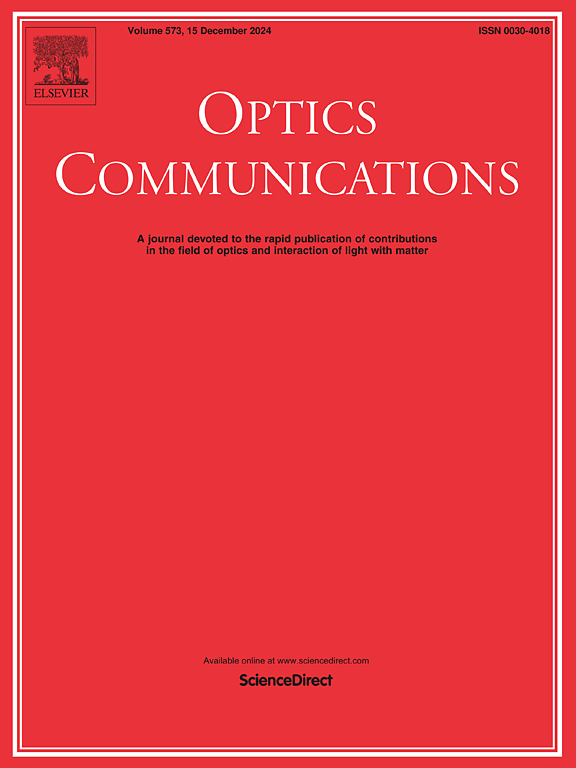不同天气条件下 NLOS 紫外线通信的同步光波信息和功率传输
IF 2.2
3区 物理与天体物理
Q2 OPTICS
引用次数: 0
摘要
本研究提出了一种紫外线通信(UVC)的功率分配方案,该方案具有同步光波信息和功率传输(SLIPT)功能。基于非视距(NLOS)单散射信道模型,分析了不同几何参数下紫外光系统的路径损耗和误码率(BER)性能。考虑了小雨、晴天和大雾三种天气条件的影响。结果证明,雾天的路径损耗最小,误码率最低,其次是晴天。所提出的 SLIPT 方法将接收能量分为两部分,一部分用于能量收集(EH),另一部分用于信息解码(ID)。该系统旨在优化自主供电的能量收集,同时确保特定的误码率阈值并保持频谱效率。进一步研究了三种天气对 SLIPT 系统的影响。结果表明,在较短的通信距离(r)、较小的接收终端仰角(βR)、较大的视场(FoV)和较低的频谱效率(η)条件下,分配给 EH 的能量比例较高,其中雾天最为有利。雨天的极端几何参数会导致无法通信,在本文的预设参数下,需要限制在 r≤10 m,Rx 仰角≤6°,FOV≥100°,光谱效率≤3。本文章由计算机程序翻译,如有差异,请以英文原文为准。
Simultaneous lightwave information and power transfer for NLOS ultraviolet communications under different weather conditions
In this work, a power allocation scheme for ultraviolet communication (UVC) with simultaneous lightwave information and power transfer (SLIPT) is proposed. Based on the non-line-of-sight (NLOS) single scattering channel model, the path loss and bit error rate (BER) performance of the UVC system with different geometrical parameters are analyzed. The effects of three types of weather, light rain, fine weather and severe fog conditions are considered. It is proved that the path loss is minimized on foggy days with minimum BER, followed by sunny days. The proposed SLIPT approach that the receiving energy is in turn divided into two parts, one for energy harvesting (EH) and the other for information decoding (ID). The system is designed to optimize energy harvesting for autonomous power supply, while ensuring a specified BER threshold and maintaining spectral efficiency. The effects of three types of weather on the SLIPT system are further investigated. It is demonstrated that under shorter communication distance(r), smaller elevation angle of receiving terminal (βR), larger field of view (FoV) and lower spectral efficiency(η) conditions, a higher percentage of energy is allocated for EH, with foggy days being the most favorable. The extreme geometric parameters of rainy condition can lead to the inability of communication, which needs to be limited to r ≤ 10 m, elevation angle of Rx ≤ 6°, FOV ≥100°, spectral efficiency ≤3, under the preset parameters in this paper.
求助全文
通过发布文献求助,成功后即可免费获取论文全文。
去求助
来源期刊

Optics Communications
物理-光学
CiteScore
5.10
自引率
8.30%
发文量
681
审稿时长
38 days
期刊介绍:
Optics Communications invites original and timely contributions containing new results in various fields of optics and photonics. The journal considers theoretical and experimental research in areas ranging from the fundamental properties of light to technological applications. Topics covered include classical and quantum optics, optical physics and light-matter interactions, lasers, imaging, guided-wave optics and optical information processing. Manuscripts should offer clear evidence of novelty and significance. Papers concentrating on mathematical and computational issues, with limited connection to optics, are not suitable for publication in the Journal. Similarly, small technical advances, or papers concerned only with engineering applications or issues of materials science fall outside the journal scope.
 求助内容:
求助内容: 应助结果提醒方式:
应助结果提醒方式:


